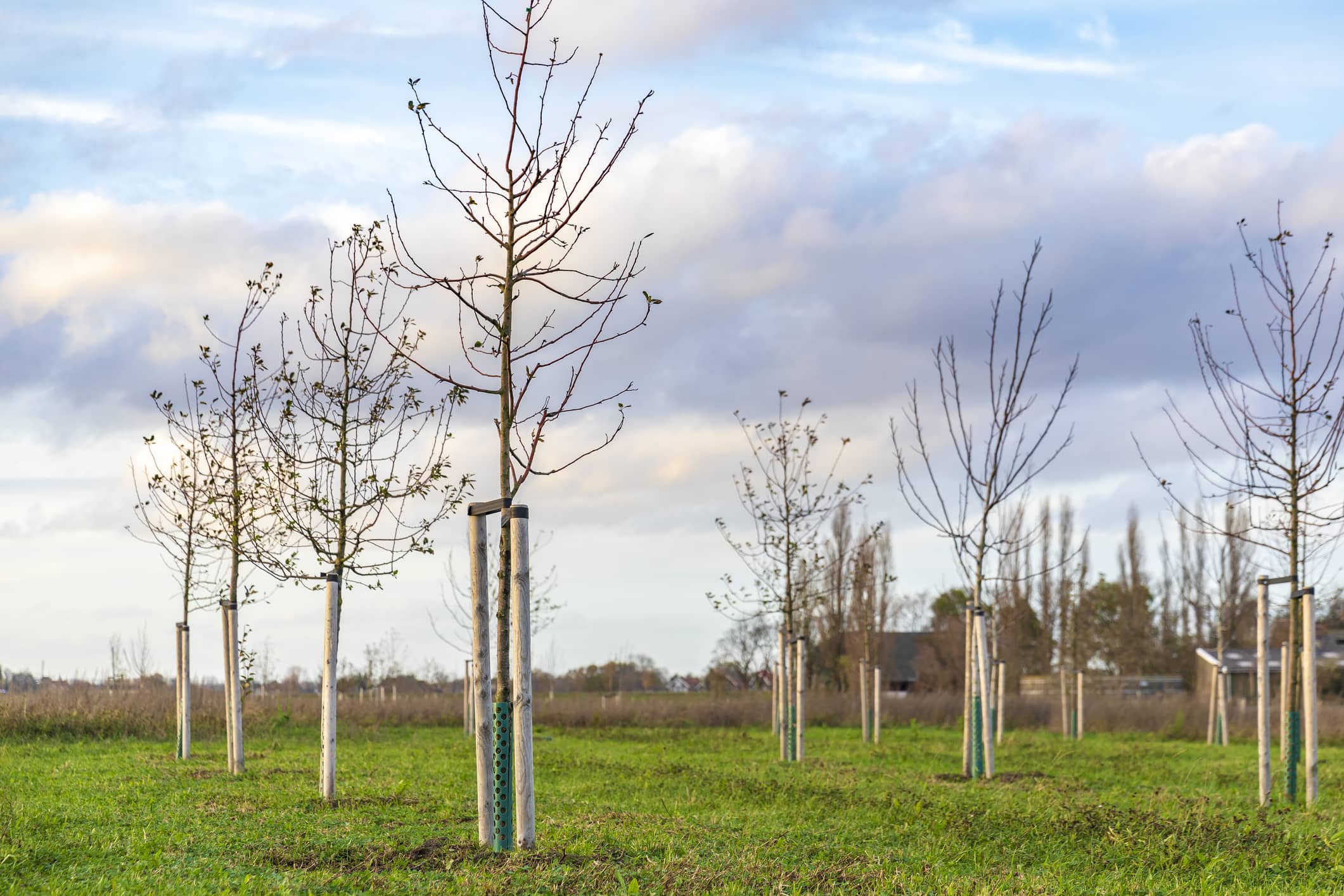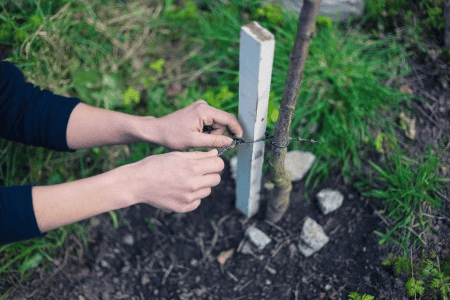Many plants grow upright towards the sun as nature intended, however, some need help with this as they endure the demands of rain, wind, snow, and even their own weight as they grow. Such top-heavy plants, therefore, need the help of tree stakes, which work by offering support to the plant as it grows, preventing it from becoming damaged by the forces of the weather, as well as its own weight.
Staking a plant involves putting upright stakes into the ground and fastening plants to them with plant ties. As the plant grows, the stakes offer support and strength, allowing the plant to continue its upward growth. There are various types of plant staking, and each one offers different benefits to different plants. Out of all the best ways to stake a plant, these are some of the most effective and easiest to execute in your garden.
Four Ways to Stake a Plant
Single stake: This is the most common way to stake a plant and one of the easiest; it involves a single stake, which can be bought at any garden centre. From bamboo stakes and wooden stakes to plastic and metal stakes, you can buy all kinds of stakes to which you can attach plastic plant ties (though some people prefer fabric ties as they’re suitable for most plants and are easily adjusted). To put in a plant stake, you need to hammer it about six inches into the ground right next to your plant, being careful not to harm the roots. Then, choose a spot about two thirds up the plant, and connect the plant to the stake with garden ties – even fabric or Velcro will do the job. Depending on the height and weight of your plant, it might need more support and will therefore require additional stakes.
Ring-style support: Plants that grow multiple stems will benefit the most from a metal ring support. This type of support has a circular grid that’s held up by metal stakes, and the plant shoots grow through this wire grid, which supports them as they grow larger and wider and produce fruit. However, there is this one disadvantage: ring-style supports with growth grids can’t be removed without the plant taking on some damage.

Tomato cage: The beauty of a cage is that it can support a number of plant species – not just tomatoes as its name may suggest. A tomato cage functions similarly to a ring-style support, but they are usually taller with tops that are open and exposed. Overall, tomato cages offer all-round support from every angle of the plant and are particularly favoured by those growing vegetable-producing plants or young trees.
Trellis: Perfect for plants that grow and expand horizontally as they grow upwards, a trellis or wooden fence offers the ideal support for such plants to grow up and out against. Examples of plants that bode well with this kind of support include melons, zucchini, pole beans and many more that tend to grow upwards and outwards.
When Should You Stake a Plant?
This depends on the plant, but generally speaking, a plant needs to be staked when its main trunk or stem can’t stand up on its own. Ideally, you should stake your plant before it gets to this stage, so that it’s not weighing itself down and potentially doing itself harm. It’s also better to stake your plant even earlier if it’s in an exposed environment with harsh weather, such as wind and rain. In any case, no matter which staking method you choose from the list, you’re doing your plants a favour that will see them flourish bigger, better and for longer than ever before.
